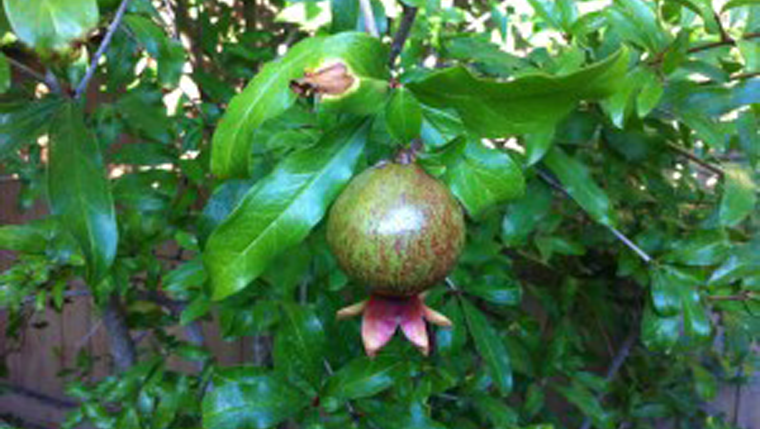In Exodus 39 pomegranates show up as dangly decorations on the edge of the high priest's robe. God said to put bells between the pomegranates - so that it went bell, pomegranate, bell, pomegranate. In good rabbinic fashion the question arose – why did God say to put the bell between the pomegranates – and not the pomegranate between the bells? Since it could have been communicated either way, they surmised there must be a reason. One common conclusion refers to the need for silence before speaking. We need to hear the bells, but the soft pomegranate is a picture of guarding against misspeaking. “We have 2 ears and one tongue” and “silence before speaking will result in less speaking” say the rabbis.
The pomegranate also is a symbol of righteousness. Tradition holds that it has 613 seeds – just as there are 613 mitzvot, or commandments of the Torah. So it has come to be associated with knowledge and learning (Torah is instruction) as well.
It is thought by some scholars that the fruit on the tree in Eden is not an apple, but rather the pomegranate (others go with fig, but that’s another debate). This matches some of the symbolism with knowledge, righteousness and obedience.
Finally, a pomegranate’s many seeds also represent fruitfulness to the Jew. Christians have added their own meaning and some see a picture of the church – with many seeds but making up a whole.
Next time you eat a pomegranate – see what pictures come to your mind. That’s meditation. Enjoy!








3 Responses